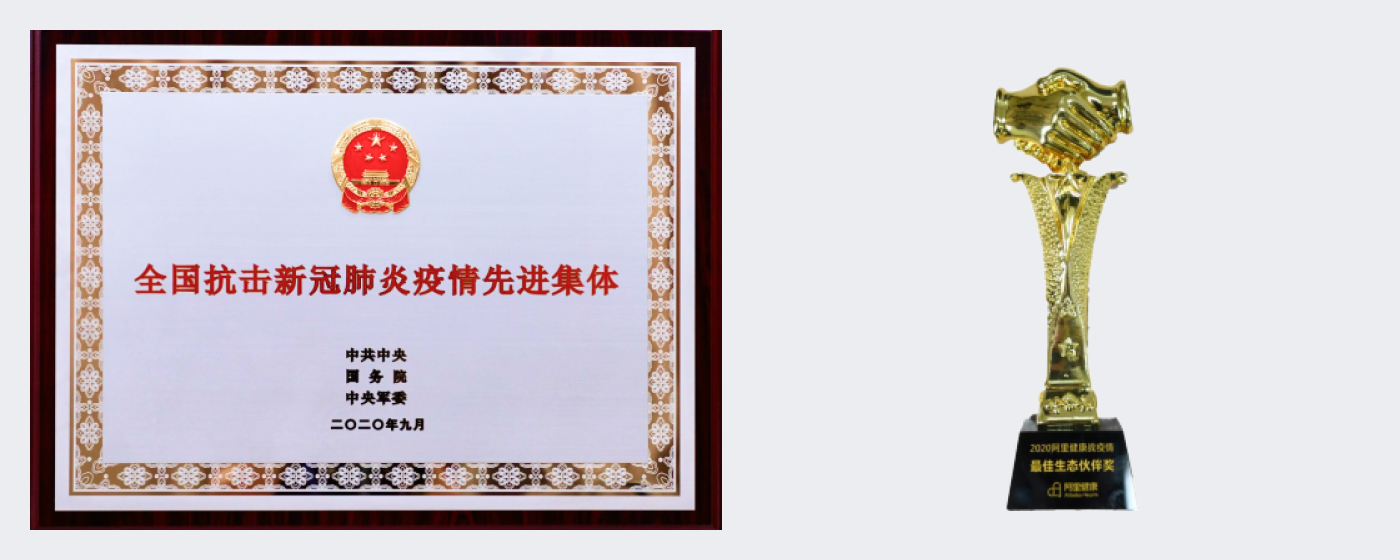Anti COVID-19

The Anti-COVID-19 Battle Story in FAHWMU
Since the outbreak of COVID-19, Wenzhou has once become one of the most serious epidemic areas. As the main battlefield for severe and critically severe patients with COVID-19 in Wenzhou, the First Affiliated Hospital of Wenzhou Medical University (FAHWMU) kept the record of ZERO missed diagnosis of COVID-19 patients, and ZERO infection of medical staff.
After the outbreak of COVID-19 epidemic, we required all the medical staff of our hospital to take the initiative in the prevention and control of the epidemic. More than 2000 party members of our hospital signed commitment letters to devote into the anti COVID-19 battle. The moment COVID-19 outbroke, we immediately set up a leading group for the epidemic prevention and control, composing 10 special mission groups, such as comprehensive coordination, medical treatment, nosocomial infection prevention and control, nursing and security. In addition, 65 specialized COVID-19 prevention and control expert groups were also set up, so as to ensure ZERO dead angle, ZERO blind spot, and ZERO omission in the hospital. We reorganized procedures of pre-examination, fever clinic and hospitalization, and rapidly vacated 4 wards with a total of 160 beds in the Infection Ward Building for patients with COVID-19.
After our hospital was designated as the only provincial hospital for the treatment of critically severe patients with COVID-19 in Wenzhou. We were responsible for all the critically severe patients and more than 80% severe patients in Wenzhou. We organized 6 expert groups with senior professional titles, actively contacting the administration areas subordinated to Wenzhou every day, catching information by on-site consultation, on-line consultation, telephone, etc., and implementing the policy “transferring every case once found”.
Moreover, for the hospitalized critically ill patients, we have exerted all our efforts to formulate a scientific individual treatment plan for each patient, such as “interaction among experts in and out of the battlefront, cooperation of MDT, joint discussion of experts from and outside the province". In the isolation ward, the hospital sent the most professional expert team responsible for disease observation and patients treatment, and set up additional MDT to implement systematical treatment plan for each critically ill patients, that is, each of them would be taken care of one expert and multi-disciplinary discussion would be held twice before and after noon every day for each of them. The hospital strictly followed the patient-centered principle, providing dual-monitoring team to double-check the medical service by setting up a "professional expert team". To be specific, in the isolation ward a professional expert team leader would in charge of tracking the whole medical service process, and outside the isolation ward we had a quality control team with chief nurse from ICU in charge of supervision. In addition, we also timely contacted experts in and out of Zhejiang Province through various channels for assistance.
The last but not least, all the employees of our hospital are required to monitor temperatures and symptoms twice a day, and each department/unit/center should report the information through the Online Administration System every day, and a special department was designated to be responsible for supervision and follow-up; all the front-line medical staffs must standardized a strict reporting regulation as required, including body temperature and respiratory symptoms etc.; the staff of our hospital returned to Wenzhou during this epidemic period must follow a standardized isolation and follow-up rules. At the same time, training on prevention and control of nosocomial infection was carried out for all the medical staffs and logistics staff of the hospital, followed by relevant assessment; the ward management system was strengthened and procedures was improved, for example, the transition wards were set up to receive suspected patients or confirmed patients whose condition has been improved and those must be transferred to another department for further treatment after the isolation. In each ward, multi-dimensional safety net composed of specially-assigned staff was established to ensure the supervision and protection.


